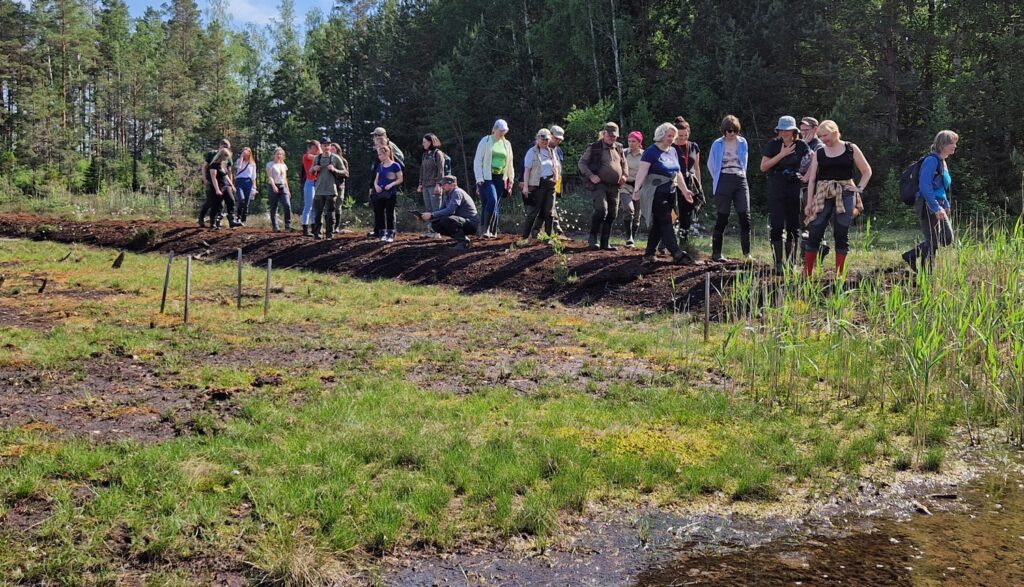Nature Experts Complete Training on Moss Identification and Conservation
On May 28th and 29th, a seminar on the identification and protection of mosses was held in Ķemeri National Park, organized by the Nature Conservation Agency and the Institute of Biology at the University of Latvia as part of the LIFE FOR SPECIES project.

The seminar began with a lecture by Andis Kalvāns, a leading researcher at the Geological Processes Research and Modeling Center of the University of Latvia, on the practical application of hydrogeological data in the work of nature experts. This helps to better assess the impact of planned activities on groundwater and surface water, and consequently on moss habitats. In the following presentation, environmental consultant Anete Pošiva-Bunkovska introduced guidelines for experts, commissioned by the Nature Conservation Agency, on assessing the impact of forest roads and drainage systems on moss habitats.
Līga Strazdiņa, a moss expert from the Institute of Biology at the University of Latvia and the LIFE FOR SPECIES project, discussed planning conservation measures for mosses with various ecological requirements. Agnese Priede, a long-time researcher at Ķemeri National Park and expert in the LIFE-IP LatViaNature project, initiated a discussion on the planning and best practices of restoring the hydrological regime of bog habitats, with examples from the Ķemeri Mires, where habitat restoration work has been carried out under the LIFE projects "Restore" and "Protection of Wetlands in Ķemeri National Park."
On the second day of the seminar, Ilze Ķuze, a senior expert at the Nature Conservation Agency, presented best practices for establishing micro-reserves to protect moss habitats. Moss expert Uvis Suško talked about the diversity and habitats of mosses in Ķemeri National Park. Ķemeri National Park is one of the richest areas in Latvia for rare and protected moss species, due to its great variety of natural conditions. The park has recorded 45 protected moss species and 58 species listed in the Latvian Red Book.
To enhance experts' skills in recognizing protected moss species, Uvis Suško and Līga Strazdiņa conducted practical sessions in natural forest habitats and indoor laboratories on both days of the seminar. During these sessions, various protected and endangered species were examined, such as the EU-protected species Dicranum viride, and specially protected species Frullania tamarisci, Riccardia multifida, Antitrichia curtipendula, and others.
As noted by the LIFE FOR SPECIES project coordinator Jēkabs Dzenis: “Many endangered and protected species depend on the moisture conditions in their habitats. Human activities such as the creation and renovation of drainage systems, road construction, and mineral extraction can significantly alter moisture conditions over large areas, thereby affecting the habitats of endangered moss species. Thus, the seminar provided experts with the opportunity to enhance their knowledge on identifying moss species, assessing impacts on them, and planning conservation measures to ensure the preservation of moss habitats.”
